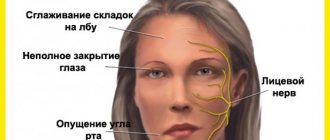What is a fugue
Dissociative fugue is considered a disorder that separates a person from previous memories of past experiences, feelings, or people in their life. People suffering from it have no memory of their identity or any details of their lives.
Dissociative fugue describes the disease as follows: a split of consciousness occurs, while simultaneously reproducing actions. At the same time, people around, seeing the patient, do not understand that something is wrong with him. A common example of dissociation is driving a car and missing your turn because you are daydreaming. Thoughts inside split the consciousness about where the car was at the moment. The realization that a person has missed his turn usually puts him back on the opposite route. Thus, dissociation can occur in healthy people, but it does not last as long.
Reflection in culture
The phenomenon of dissociative fugue has become the object of many cultural areas. For example, in cinema, this theme is revealed in such films as “Planet Ka-Pax”, “Lost Highway”, “House of Dreams”, “United States of Tara”.
In addition to the fact that dissociative fugue is a form of psychological disorder, there is also a musical form that also serves as the name of musical works with this form. A notable feature of such works is the composer’s development of one main theme, a melody, followed by repetition (“escape”) of this melody in other tonic voices.
One of the famous works of Johann Sebastian Bach “Prelude and Fugue in C major” is presented below at the link:
We recommend that you listen to this piece of music not only because this example of musical form will to some extent allow you to better understand the essence of such a phenomenon as dissociative fugue, but also because Bach's music will allow you to relax and unwind a little. After all, the main reason for the appearance of dissociative disorder is still severe stress. Remember that the most important thing is not getting rid of the consequences of a negative event, but preventing the occurrence of its causes.
By the way, in order to become more stress-resistant, learn to deal with apathy, as well as fear and anxiety, we recommend that you complete our six-week online program “Mental Self-Regulation”. By devoting only 25-30 minutes a day to classes, you will forget about procrastination and easily begin to take the first steps in any business.
Sometimes shocks happen in life: we learn about the death of loved ones, we are fired from an interesting job, a loved one turns out to be distant and ununderstanding, friends betray us, and plans collapse under the pressure of circumstances. All this and much more is part of a certain period of our life, and we must be strong at this time so as not to lose ourselves, not to consign to oblivion all the joy and love that actually also exists in our lives and is replete with bright colors, only here negative circumstances added a little darker tones. But remember: truly beautiful paintings combine the harmony of both light and dark tones. In this life you cannot do without sadness, but know how to move away from it.
We wish you a good mood!
We also recommend reading:
- Storytelling
- The butterfly effect and its philosophical meaning
- Medici effect
- 10 Strangest Experiments in the History of Science
- How to find time to study and not give up halfway
- Advice from a 16th century priest on self-development
- Worldview as a life path
- “Have you seen it” or Where does the deja vu effect come from?
- Duality of personality: me or us
- Culture shock and how to overcome it
- Gratitude Skill
Key words:1Self-knowledge
Is it possible
After severe stress, some part of the memory is blocked and a dissociative fugue occurs. Examples from life:
- The 57-year-old husband and father of two, a Boy Scout, left the garage near his office and disappeared. Six months later he was found, living under a new name in a Chicago homeless shelter, not knowing who he was or where he came from.
- A middle-aged woman buys a newspaper to find out the date and what city she is in, and then contacts social services to determine her identity. As it turned out later, she had been considered missing for 5 years.
- Agatha Christie was perhaps the most famous writer of all time. In 1926, on the evening of December 3, 36-year-old Christie mysteriously disappeared from her home in England. The next morning, her abandoned car was found, but she was nowhere to be found. Before her disappearance, her husband Archibald was threatening divorce. On December 14, Christie was found alive and registered under the name Teresa Neil at the Harrogate Hotel. She claimed that she did not know how she ended up there. Some believe that this disappearance was a performance for PR and a reunion with her husband. However, there is evidence that Christie was in a fugue state and actually lost her memory. On the day of her disappearance, people saw her and stated that she was not wearing warm clothes, despite the cold season, she seemed confused and discouraged. There is speculation that her impending divorce and the recent death of her mother have caused her to become deeply depressed. Agatha Christie died in 1976 and took the truth about what really happened with her to the grave.
Therapy
Psychotherapy, including hypnosis and conversations with a person, helps in this case. As a rule, the patient is given a sedative, and the therapist begins to ask questions regarding this period of time. Often, the search for answers to the questions asked is unsuccessful; patients cannot remember what happened to them during the fugue period. Fortunately, a relatively small number of the world's population - only 0.02% - suffer from this mental disorder.
It is necessary to understand that the period during which a person was in the grip of a dissociative disorder disappears from his life, and this often happens for quite a long time. For example, the young American journalist Jody Roberts left home back in 1985 and never returned. So, for 12 years the girl lived in Alaska, becoming Jane Dee, found a new profession (designer), got married and gave birth to four children.
At home, after a long search by police officers, parents and everyone who was not indifferent to the story, Jodie was declared dead. In fact, 12 years later he was a completely different person. Of course, this situation greatly influenced the life of the girl and her family, and the subsequent return to the life of Jodie Roberts for Jane Dee would have become traumatic and would have turned her established way of life upside down. Therefore, you must always approach psychotherapy methods carefully and take into account a large number of factors.
Most precedents show that after the fact of the onset of a dissociative fugue, a second similar case does not occur. The only exceptions are people with dissociative identity disorder (dual personality). Such people may become victims of fugue more than once. For dissociative identity disorder, fugue is treated mainly with medication.
What to do
Patients experiencing dissociative fugue should be under close medical supervision. The patient's medical history should be reviewed to rule out an organic cause for the disease (eg, epilepsy or other personality disorder). If no cause is found, a psychologist or other mental health professionals will interview the patient and conduct psychological evaluations. These assessments may include dissociative experiences, a structured clinical interview for a disorder called dissociative fugue. The causes and symptoms of the disease may occur with the use and abuse of certain medications and illegal drugs. For example, patients with alcohol addiction are often in a state of “blackout”, while performing some actions, and sometimes making unplanned trips; a striking example of such a dissociative fugue is the film “Enjoy Your Bath.”
Forecast
Predisposing factors are severe alcohol abuse, the presence of an emotionally unstable, hysterical or schizoid personality type, as well as concomitant affective pathology. It is based on a psychological factor associated with the desire to escape from painfully perceived circumstances. The etiopathogenetic mechanism is close to that described for dissociative amnesia. In addition to catastrophic circumstances, fugue occurs in the context of everyday psychosocial stress (insult, emotionally significant loss, failure, family conflict, financial problems).
With a dissociative fugue, this is a fugue in which a favorable prognosis is given. If the disease does not cause the development of other mental disorders, then at the end of the fugue a full restoration of health is observed.
Related posts:
- Hypolybidemia Decreased libido (hypolybidemia) is a common form of sexual dysfunction in men….
- Treatment of phobias with hypnosis A phobia is an irrational and uncontrollable fear that arises in response...
- Treatment of phobias with medications A phobia is a type of anxiety disorder defined by a state of persistent fear. Phobia,…
- Primary tics or tic disorders Primary tics mean hereditary ones, from a clinical point of view it is advisable to compile ...
Dissociative fugue: symptoms of the disease, prevention
It is not easy to explain the cause of the fugue state, but people who suffer from the disorder have usually had some kind of serious trauma or stress in their lives. War veterans or people who have suffered extreme violence or disaster scenarios may be more prone to these symptoms. Some psychologists believe that fugue sufferers may have unresolved conflict in their lives, which can add to the likelihood of abnormal dissociation. It is possible that drug abuse may contribute to the development of this disease.
Symptoms
This mental disorder is manifested by the following symptoms:
- The dissociative flight reaction is a dissociative fugue. The person behaves quite normally, but acquires character traits that are unusual for him and moves away from his place of residence. Unconscious memory loss (partial or complete) occurs. A person may suddenly leave work, behave differently than usual, respond to different names and not understand what is happening. This abnormal condition passes quickly, and the return to normal is rapid.
- Dissociative amnesia - under the influence of stress or a traumatic event, the memory suddenly disappears, but the individual understands this. His consciousness “works” normally and he is able to perceive any new information.
- Dissociative identity disorder. A personality is split into several, each having its own name, character, thinking, psychological properties, behavior, and nationality. Each of them periodically “commands” a person, personalities change each other without any reason or systematicity. The individual does not realize or feel such replacements, does not remember what happened to him in one form or another.
- Depersonalization disorder - a person seems to observe his body and mental processes in it from the outside. The surrounding world seems colorless, unreal (derealization), and parts of the body are of incomprehensible sizes, the sense of time is lost. The individual feels like he is a robot and is tormented by anxiety and depression.
- Derealization without depersonalization.
- Trance is a violation of consciousness, there is no reaction to external stimuli. This is how children react to trauma or violence. Common to trans mediums during a seance and to pilots during a long flight. It is also observed in a number of cultures, such as excitement and rage, memory lapses, and strange actions, for example, among the Malays and Eskimos (Amok, Piblokto).
- Ganser syndrome - deliberately incorrect answers to the simplest questions (faint speech), simulation of a severe mental illness. Sometimes accompanied by amnesia, loss of orientation, and perception disorders. Common among male prisoners.
If you notice such signs in yourself or in your relatives, you should contact a psychiatrist or psychologist. Treatment must be carried out in a timely manner, as complications are possible:
- prolonged depression;
- suicide attempts;
- severe headaches;
- self-harm;
- problems with eating;
- sexual dysfunction;
- anxiety disorders;
- drug addiction or alcoholism;
- nightmares, sleepwalking, insomnia.
How common is the disease?
Dissociative fugue is relatively rare, with a prevalence rate of 0.2% in the general population. The length of a fugue episode is believed to be related to the severity of the stress or trauma that caused it. In most cases, it appears as single episodes without repetition. In some cases, a person will not remember events that occurred during the fugue state. In other situations, amnesia associated with the traumatic event that initiated the fugue may persist to some extent after the episode is completed. Prevention of this disorder can be a conversation with a psychotherapist after a tragic episode in life, good family support and close, trusting relationships with friends. If there is no way out for traumatic thoughts, the brain blocks the memory for protection and amnesia occurs.
General information
Photo by Daria Liudnaya: Pexels
Dissociative fugue is a variant manifestation of dissociative identity disorder. Let me remind you that dissociative disorders are associated with disorders of memory, perception, and self-awareness. Fuga from Latin means flight.
Fugue in most cases begins in the morning, suddenly and brightly. A person wakes up, packs his things and leaves in an unknown direction... For some time he is vaguely aware of his identity, after which partial or complete amnesia of his previous life sets in.
A dissociative fugue can last from several hours to several months, rarely years. Despite the fact that at this moment the personality is controlled by the “escaped self,” he behaves quite consciously and organized.
At the same time, a person can begin to lead a “new” life. New manners, interests, even a new profession and family may appear.
Dissociative disorders
Psychology according to Freud
Freud suggests that psychogenic amnesia is an act of self-preservation, where the alternative may be traumatic anxiety or even suicide. Unpleasant, unwanted or psychologically dangerous memories are blocked from entering consciousness. Neurologically, normal autobiographical memory processing is inhibited by imbalances of stress hormones such as glucocorticoids and mineralocorticoids in the brain, especially in regions of the limbic system involved in memory formation.
Such repressed memories may be recalled spontaneously by a particular smell, taste, or other identifier, years or decades after the event. Because this is due to psychological rather than physiological causes of psychogenic amnesia.
Dissociative fugue: symptoms, treatment
When treating dissociative fugue, the focus should be on helping the patient come to terms with the traumatic event or stress that caused the disorder. This can be achieved through various types of interactive treatments that explore the trauma, and work must also be done to build the patient's coping mechanisms to prevent further recurrence. Some therapists use cognitive therapy, which focuses on changing maladaptive thinking patterns. It is based on the principle that inappropriate behavior, in this case a fugue episode, is initiated by inappropriate or irrational thinking. The cognitive therapist will try to change these thinking patterns (also known as cognitive distortions) by exploring the reasonableness and validity of the assumptions behind them with the patient.
Medication may be a useful adjunct to treat some of the symptoms a patient may experience in relation to dissociative episodes. In some cases, certain antidepressants or anti-anxiety medications may be prescribed.
Dissociative fugue: causes, symptoms, description of the disease and diagnosis
Health May 20, 2016
Waking up in a new city with no memory of your identity or previous life may sound like something out of a Hollywood movie or soap opera. Dissociative fugue is the name given to the effect of amnesia associated with the identity of what is happening around you for several weeks or months.
What is a fugue
Dissociative fugue is considered a disorder that separates a person from previous memories of past experiences, feelings, or people in their life. People suffering from it have no memory of their identity or any details of their lives.
Dissociative fugue describes the disease as follows: a split of consciousness occurs, while simultaneously reproducing actions. At the same time, people around, seeing the patient, do not understand that something is wrong with him.
A common example of dissociation is driving a car and missing your turn because you are daydreaming. Thoughts inside split the consciousness about where the car was at the moment.
The realization that a person has missed his turn usually puts him back on the opposite route. Thus, dissociation can occur in healthy people, but it does not last as long.
Is it possible
After severe stress, some part of the memory is blocked and a dissociative fugue occurs. Examples from life:
- The 57-year-old husband and father of two, a Boy Scout, left the garage near his office and disappeared. Six months later he was found, living under a new name in a Chicago homeless shelter, not knowing who he was or where he came from.
- A middle-aged woman buys a newspaper to find out the date and what city she is in, and then contacts social services to determine her identity. As it turned out later, she had been considered missing for 5 years.
- Agatha Christie was perhaps the most famous writer of all time. In 1926, on the evening of December 3, 36-year-old Christie mysteriously disappeared from her home in England. The next morning, her abandoned car was found, but she was nowhere to be found. Before her disappearance, her husband Archibald was threatening divorce. On December 14, Christie was found alive and registered under the name Teresa Neil at the Harrogate Hotel. She claimed that she did not know how she ended up there. Some believe that this disappearance was a performance for PR and a reunion with her husband. However, there is evidence that Christie was in a fugue state and actually lost her memory. On the day of her disappearance, people saw her and stated that she was not wearing warm clothes, despite the cold season, she seemed confused and discouraged. There is speculation that her impending divorce and the recent death of her mother have caused her to become deeply depressed. Agatha Christie died in 1976 and took the truth about what really happened with her to the grave.
How does a fugue manifest itself?
By subconsciously separating from all one's memories and experiences, a dissociative fugue is activated. Causes, symptoms, diagnosis are always of interest. In some cases, a person may leave work but never return home. Instead, the individual continues to move without a goal, maintaining a partial consciousness responsible for his mechanical actions.
In the end he will find himself in an unfamiliar city far from home. He will have no idea who he is or what he is doing in this new city. Sometimes a person with fugue creates a new identity to compensate for memory loss.
He may exist in this manner for anywhere from a few days to several months or even years before the fugue dissipates, after which his memory is restored and he returns home.
Symptoms of fugue state
- Unplanned trips away from home alone.
- Inability to remember past events and experiences.
- Depersonalization or the feeling of being outside of one's body.
- The inability to remember personality and details from one's life for a period of days to months, in rare cases, can last for years.
What to do
Patients experiencing dissociative fugue should be under close medical supervision. The patient's medical history should be reviewed to rule out an organic cause for the disease (eg, epilepsy or other personality disorder).
If no cause is found, a psychologist or other mental health professionals will interview the patient and conduct psychological evaluations. These assessments may include dissociative experiences, a structured clinical interview for a disorder called dissociative fugue.
The causes and symptoms of the disease may occur with the use and abuse of certain medications and illegal drugs.
For example, patients with alcohol addiction are often in a state of “blackout”, while performing some actions, and sometimes making unplanned trips; a vivid example of such a dissociative fugue is the film “Enjoy Your Bath.”
Dissociative fugue: symptoms of the disease, prevention
It is not easy to explain the cause of the fugue state, but people who suffer from the disorder have usually had some kind of serious trauma or stress in their lives.
War veterans or people who have suffered extreme violence or disaster scenarios may be more prone to these symptoms.
Some psychologists believe that fugue sufferers may have unresolved conflict in their lives, which can add to the likelihood of abnormal dissociation. It is possible that drug abuse may contribute to the development of this disease.
How common is the disease?
Dissociative fugue is relatively rare, with a prevalence rate of 0.2% in the general population. The length of a fugue episode is believed to be related to the severity of the stress or trauma that caused it.
In most cases, it appears as single episodes without repetition. In some cases, a person will not remember events that occurred during the fugue state.
In other situations, amnesia associated with the traumatic event that initiated the fugue may persist to some extent after the episode is completed.
Prevention of this disorder can be a conversation with a psychotherapist after a tragic episode in life, good family support and close, trusting relationships with friends. If there is no way out for traumatic thoughts, the brain blocks the memory for protection and amnesia occurs.
Psychology according to Freud
Freud suggests that psychogenic amnesia is an act of self-preservation, where the alternative may be traumatic anxiety or even suicide.
Unpleasant, unwanted or psychologically dangerous memories are blocked from entering consciousness.
Neurologically, normal autobiographical memory processing is inhibited by imbalances of stress hormones such as glucocorticoids and mineralocorticoids in the brain, especially in regions of the limbic system involved in memory formation.
Such repressed memories may be recalled spontaneously by a particular smell, taste, or other identifier, years or decades after the event. Because this is due to psychological rather than physiological causes of psychogenic amnesia.
Dissociative fugue: symptoms, treatment
When treating dissociative fugue, the focus should be on helping the patient come to terms with the traumatic event or stress that caused the disorder.
This can be achieved through various types of interactive treatments that explore the trauma, and work must also be done to build the patient's coping mechanisms to prevent further recurrence.
Some therapists use cognitive therapy, which focuses on changing maladaptive thinking patterns. It is based on the principle that inappropriate behavior, in this case a fugue episode, is initiated by inappropriate or irrational thinking.
The cognitive therapist will try to change these thinking patterns (also known as cognitive distortions) by exploring the reasonableness and validity of the assumptions behind them with the patient.
Medication may be a useful adjunct to treat some of the symptoms a patient may experience in relation to dissociative episodes. In some cases, certain antidepressants or anti-anxiety medications may be prescribed.
Treatment with therapy
Creative therapies (art therapy, music therapy) allow patients to express and channel thoughts and emotions into “safe” channels. They empower the patient by encouraging self-knowledge and a sense of control.
Group Therapy – A therapist or counselor may be helpful in supporting the patient on an ongoing basis. It also provides the patient with opportunities to gain self-confidence and interact with colleagues in a positive way.
Family therapy can be part of the treatment regimen, both in exploring the trauma that caused the fugue episode and in educating the rest of the family about the illness.
Source: .ru
Source: https://monateka.com/article/84956/
Treatment with therapy
Creative therapies (art therapy, music therapy) allow patients to express and channel thoughts and emotions into “safe” channels. They empower the patient by encouraging self-knowledge and a sense of control.
Group Therapy - A therapist or counselor may be helpful in supporting the patient on an ongoing basis. It also provides the patient with opportunities to gain self-confidence and interact with colleagues in a positive way.
Family therapy can be part of the treatment regimen, both in exploring the trauma that caused the fugue episode and in educating the rest of the family about the illness.
Diagnosis and treatment
How to recognize?
Studying a patient during a fugue period is impossible, since a person comes to the hospital after an attack and a return to his previous life .
The specialist determines the diagnosis after the fact.
In order not to be mistaken with the conclusions, the doctor pays attention to the following features that are characteristic only of fugue :
- Dissociative amnesia . The patient loses memory of recent events that are personal in nature. Universal knowledge and skills are preserved, as is the ability to perceive new information.
- Purposeful departure . Man does not wander and is not lost. He arrives at a specific place. The reason for the trip is unknown to the patient himself.
- Social interaction . The patient does not withdraw into himself; he communicates adequately with others. She also doesn’t forget to take care of herself, maintain hygiene, and eat on time.
Apart from these signs, people experiencing a fugue attack are absolutely healthy, both mentally and physiologically.
Therapy methods
The disease is dealt with by psychiatrists, psychotherapists and clinical psychologists. Expert help covers two areas:
- Work on transforming a person’s attitude towards the stressful circumstances that provoked the attack.
- Support in understanding and accepting the changes that occurred during the fugue.
First of all, conversations are held with the patient, the purpose of which is to return him to normal life in the least painful way .
The specialists will also use the following techniques:
- positive therapy;
- person-centered therapy;
- rational therapy;
- psychoanalysis;
- hypnosis.
The prescription of tranquilizers and antidepressants is possible if a person has mood disorders and persistent anxiety.
The prognosis for recovery is favorable . The patient, who has no other mental illnesses, recovers completely.








